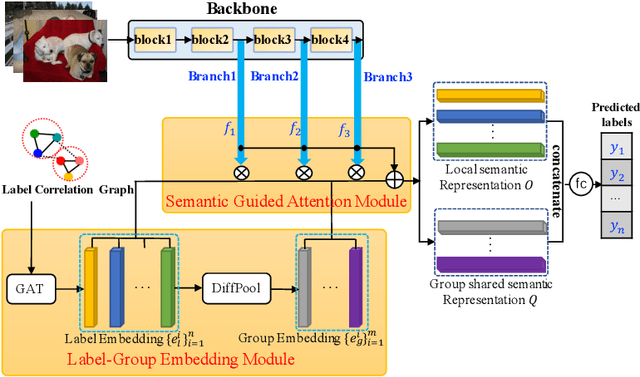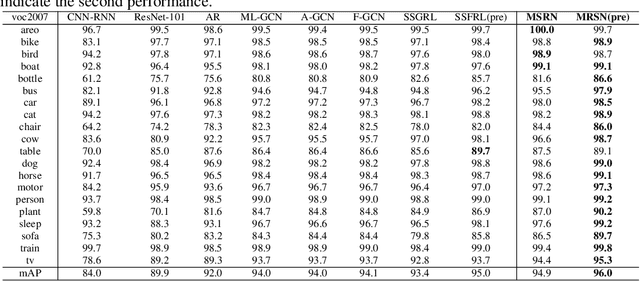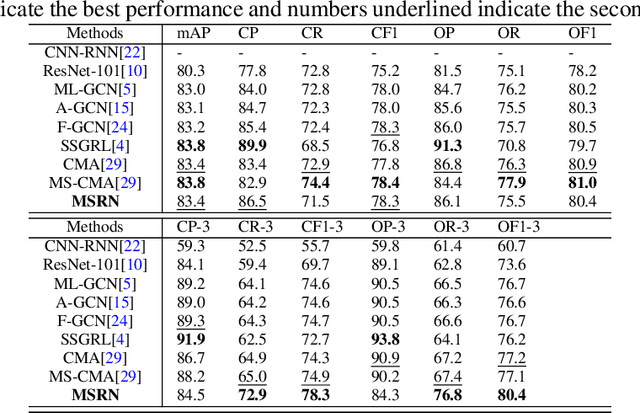Xiao Zheng
Towards Reliable Emergency Wireless Communications over SAGINs: A Composite Fading and QoS-Centric Perspective
Oct 08, 2025Abstract:In emergency wireless communications (EWC) scenarios, ensuring reliable, flexible, and high-rate transmission while simultaneously maintaining seamless coverage and rapid response capabilities presents a critical technical challenge. To this end, satellite-aerial-ground integrated network (SAGIN) has emerged as a promising solution due to its comprehensive three-dimensional coverage and capability to meet stringent, multi-faceted quality-of-service (QoS) requirements. Nevertheless, most existing studies either neglected the inherent characteristics of the complex channel conditions due to the terrain changes or analyzed the performance in the absence of QoS constraints, resulting in a mismatch between theoretical analysis and practical performance. To remedy such deficiencies, in this paper we establish a performance modeling framework for SAGIN employing the Fisher-Snedecor $\mathcal{F}$ composite fading model to characterize the air-ground link. In specific, the proposed $\mathcal{F}$ composite fading channel is adopted to accurately describe both multipath fading and shadowing in harsh ground environments. The exact distribution of end-to-end signal-to-noise (SNR) statistics for space-air and air-ground links is developed, enabling theoretical analysis of cascaded channels with fixed-gain amplify-and-forward (AF) and decode-and-forward (DF) relaying protocols, respectively. Furthermore, asymptotic expressions of the derived results are provided to offer concise representations and demonstrate close alignment with theoretical predictions in the high-SNR regime. Finally, the insightful closed-form and asymptotic expressions of effective capacity with QoS provisioning, outage probability, and $\epsilon$-outage capacity are investigated, respectively, followed by both field measurements and Monte Carlo simulations to verify the effectiveness.
Accelerating LLM Inference Throughput via Asynchronous KV Cache Prefetching
Apr 08, 2025Abstract:Large Language Models (LLMs) exhibit pronounced memory-bound characteristics during inference due to High Bandwidth Memory (HBM) bandwidth constraints. In this paper, we propose an L2 Cache-oriented asynchronous KV Cache prefetching method to break through the memory bandwidth bottleneck in LLM inference through computation-load overlap. By strategically scheduling idle memory bandwidth during active computation windows, our method proactively prefetches required KV Cache into GPU L2 cache, enabling high-speed L2 cache hits for subsequent accesses and effectively hiding HBM access latency within computational cycles. Extensive experiments on NVIDIA H20 GPUs demonstrate that the proposed method achieves 2.15x improvement in attention kernel efficiency and up to 1.97x end-to-end throughput enhancement, surpassing state-of-the-art baseline FlashAttention-3. Notably, our solution maintains orthogonality to existing optimization techniques and can be integrated with current inference frameworks, providing a scalable latency-hiding solution for next-generation LLM inference engines.
Huygens-Fresnel Model Based Position-Aided Phase Configuration for 1-Bit RIS Assisted Wireless Communication
Jun 05, 2024Abstract:Reconfigurable intelligent surface (RIS), composed of nearly passive elements, is regarded as one of the potential paradigms to support multi-gigabit data in real-time. However, in traditional CSI (channel state information) driven frame, the training overhead of channel estimation greatly increases as the number of RIS elements increases to intelligently manipulate the reflected signals. To conveniently use the reflected signal without complex CSI feedback, in this paper we propose a position-aided phase configuration scheme based on the property of Fresnel zone. In particular, we design the impedance based discrete RIS elements with joint absorption mode and reflection mode considering the fabrication complexities, which integrated the property of the Fresnel zone to resist the impact of position error. Then, with joint absorption and 1-bit reflection mode elements, we develop the two-step position-aided ON/OFF states judgement (TPOSJ) scheme and the frame structure to control the ON/OFF state of RIS, followed by analyzing the impacts of mobility and position error on our proposed scheme. Also, we derive the Helmholtz-Kirchhoff integral theorem based power flow. Simulations show that the proposed scheme can manipulate the ON/OFF state intelligently without complex CSI, thus verifying the practical application of our proposed scheme.
Neural Network Approach for Non-Markovian Dissipative Dynamics of Many-Body Open Quantum Systems
Apr 17, 2024



Abstract:Simulating the dynamics of open quantum systems coupled to non-Markovian environments remains an outstanding challenge due to exponentially scaling computational costs. We present an artificial intelligence strategy to overcome this obstacle by integrating the neural quantum states approach into the dissipaton-embedded quantum master equation in second quantization (DQME-SQ). Our approach utilizes restricted Boltzmann machines (RBMs) to compactly represent the reduced density tensor, explicitly encoding the combined effects of system-environment correlations and nonMarkovian memory. Applied to model systems exhibiting prominent effects of system-environment correlation and non-Markovian memory, our approach achieves comparable accuracy to conventional hierarchical equations of motion, while requiring significantly fewer dynamical variables. The novel RBM-based DQME-SQ approach paves the way for investigating non-Markovian open quantum dynamics in previously intractable regimes, with implications spanning various frontiers of modern science.
Point Cloud Pre-training with Diffusion Models
Nov 25, 2023Abstract:Pre-training a model and then fine-tuning it on downstream tasks has demonstrated significant success in the 2D image and NLP domains. However, due to the unordered and non-uniform density characteristics of point clouds, it is non-trivial to explore the prior knowledge of point clouds and pre-train a point cloud backbone. In this paper, we propose a novel pre-training method called Point cloud Diffusion pre-training (PointDif). We consider the point cloud pre-training task as a conditional point-to-point generation problem and introduce a conditional point generator. This generator aggregates the features extracted by the backbone and employs them as the condition to guide the point-to-point recovery from the noisy point cloud, thereby assisting the backbone in capturing both local and global geometric priors as well as the global point density distribution of the object. We also present a recurrent uniform sampling optimization strategy, which enables the model to uniformly recover from various noise levels and learn from balanced supervision. Our PointDif achieves substantial improvement across various real-world datasets for diverse downstream tasks such as classification, segmentation and detection. Specifically, PointDif attains 70.0% mIoU on S3DIS Area 5 for the segmentation task and achieves an average improvement of 2.4% on ScanObjectNN for the classification task compared to TAP. Furthermore, our pre-training framework can be flexibly applied to diverse point cloud backbones and bring considerable gains.
Twin Graph-based Anomaly Detection via Attentive Multi-Modal Learning for Microservice System
Oct 07, 2023Abstract:Microservice architecture has sprung up over recent years for managing enterprise applications, due to its ability to independently deploy and scale services. Despite its benefits, ensuring the reliability and safety of a microservice system remains highly challenging. Existing anomaly detection algorithms based on a single data modality (i.e., metrics, logs, or traces) fail to fully account for the complex correlations and interactions between different modalities, leading to false negatives and false alarms, whereas incorporating more data modalities can offer opportunities for further performance gain. As a fresh attempt, we propose in this paper a semi-supervised graph-based anomaly detection method, MSTGAD, which seamlessly integrates all available data modalities via attentive multi-modal learning. First, we extract and normalize features from the three modalities, and further integrate them using a graph, namely MST (microservice system twin) graph, where each node represents a service instance and the edge indicates the scheduling relationship between different service instances. The MST graph provides a virtual representation of the status and scheduling relationships among service instances of a real-world microservice system. Second, we construct a transformer-based neural network with both spatial and temporal attention mechanisms to model the inter-correlations between different modalities and temporal dependencies between the data points. This enables us to detect anomalies automatically and accurately in real-time. The source code of MSTGAD is publicly available at https://github.com/alipay/microservice_system_twin_graph_based_anomaly_detection.
Multi-layered Semantic Representation Network for Multi-label Image Classification
Jun 22, 2021



Abstract:Multi-label image classification (MLIC) is a fundamental and practical task, which aims to assign multiple possible labels to an image. In recent years, many deep convolutional neural network (CNN) based approaches have been proposed which model label correlations to discover semantics of labels and learn semantic representations of images. This paper advances this research direction by improving both the modeling of label correlations and the learning of semantic representations. On the one hand, besides the local semantics of each label, we propose to further explore global semantics shared by multiple labels. On the other hand, existing approaches mainly learn the semantic representations at the last convolutional layer of a CNN. But it has been noted that the image representations of different layers of CNN capture different levels or scales of features and have different discriminative abilities. We thus propose to learn semantic representations at multiple convolutional layers. To this end, this paper designs a Multi-layered Semantic Representation Network (MSRN) which discovers both local and global semantics of labels through modeling label correlations and utilizes the label semantics to guide the semantic representations learning at multiple layers through an attention mechanism. Extensive experiments on four benchmark datasets including VOC 2007, COCO, NUS-WIDE, and Apparel show a competitive performance of the proposed MSRN against state-of-the-art models.
 Add to Chrome
Add to Chrome Add to Firefox
Add to Firefox Add to Edge
Add to Edge